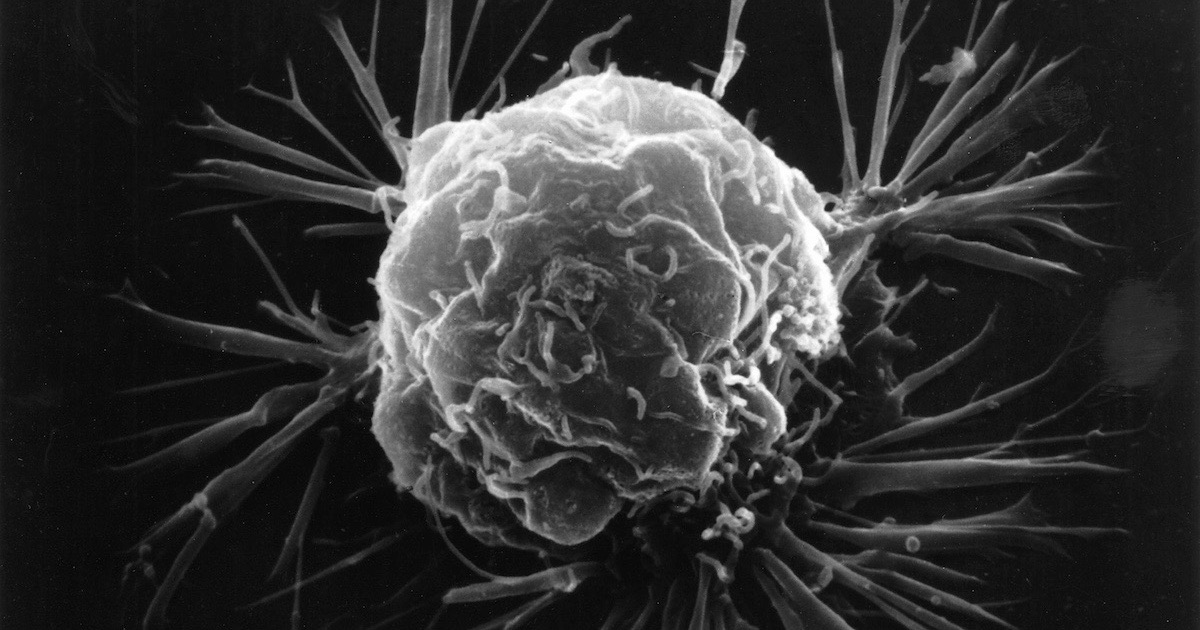 Evolution
Evolution
 Medicine
Medicine
Evolutionary Theory Might Explain…a Deadly Disease


Most readers of Evolution News are well aware that evolutionary theory fails to explain what almost all biology students are told it explains: the origin and diversity of life. It now seems that evolutionary theory might actually explain the opposite: cancer.
In March 1973, neo-Darwinian biologist Theodosius Dobzhansky published an article in The American Biology Teacher titled “Nothing in biology makes sense except in the light of evolution.” Now, 45 years later, cancer biologist Mel Greaves has published an article in BMC Biology titled “Nothing in cancer makes sense except…”
According to Greaves, cancer is “an evolutionary process, not just in terms of change over time but in the true Darwinian sense of random genetic variation and natural selection of the best-adapted or fittest variants.” As Greaves acknowledges, the idea is decades old, and he has written on the topic before. In 2012, he and biologist Carlo Maley wrote in Nature, “The basic principle of a Darwinian evolutionary system is the purposeless genetic variation of reproductive individuals who are united by common descent, together with natural selection of the fittest variants. Cancer is a clear example of such a system.”
In cancer, some of a body’s cells break loose from normal controls, divide without stopping, and then invade surrounding tissues. In some cases, cancer cells can break off and travel to other places in the body and form new tumors. The disease can be fatal: In the United States, over half a million people die each year from cancer.
If we use “gene” to mean a segment of DNA that encodes a protein, many cancers have mutations in genes of the Ras family that induce cells to divide. In normal cells Ras genes are turned off much of the time, but when mutated they get stuck in the “on” position and induce cancer cells to divide without stopping.
The TP53 gene encodes a protein called p53 that binds to specific DNA sequences and interacts with many other molecules involved in cell metabolism. In normal cells, p53 prevents the cell from becoming cancerous, so the protein is called a “tumor suppressor.” When TP53 mutates in cancer cells, however, its tumor suppressor function is abolished. The mutant protein still binds to DNA, but it has lost its sequence specificity, so it interacts with regions of DNA that are unaffected by normal p53. According to Israeli cancer researchers Moshe Oren and Varda Rotter, the mutant protein reaches high concentrations in tumor cells, so “relatively weak molecular interactions, which are marginal” with the normal protein, “may now be amplified by mass action and reach a threshold that allows them to exert a measurable impact on biochemical processes within the cell.” So TP53, like Ras, runs wild in cancer.
Life requires metabolic balance, so living organisms must delicately control the biochemical reactions within them. What happens in cancer is that some cells abandon those controls and destroy the balance. Life also requires that cellular activities be highly integrated to work for the good of the whole organism. What happens in cancer is not integration, but disintegration. So — even before it causes the victim’s death — cancer can be seen as the opposite of life.
Yet Greaves might be right: Maybe evolutionary theory does explain the progression of cancer. In fact, according to Greaves cancer progression is “reminiscent of Charles Darwin’s iconic ‘I think’ drawing in which he imagined how different species might evolve from a common ancestor.”

But does evolutionary theory help us understand the cause(s) or treatment of cancer? According to Greaves, the standard view that many cancers arise via spontaneous mutation is “contentious.” In fact, the cause(s) of cancer remain controversial.
How about treatment? Greaves points out that “the majority [of cancers] are potentially preventable” — for example, by not smoking, by eating a healthy diet, and by avoiding exposure to viruses that may cause cancer. Furthermore, “most cancers are curable by surgery or radiotherapy if detected early” when they are still localized.
So medical professionals should advise patients on how they might minimize their risk of cancer. And we need to improve methods to detect cancer in its early stages, by developing better biochemical tests and inventing better imaging technology. But developing better biochemical tests and inventing new technology don’t require evolutionary theory.
Nevertheless, Greaves maintains, “It’s a travesty that it is still possible to obtain a medical degree whilst in denial, or lacking understanding, of the essential tenets of evolutionary biology.” Greaves thereby echoes the view of a relatively recent movement called “Darwinian medicine.” Psychiatrist Randolph Nesse, a leader in this movement, would require “questions about evolution in medical licensing examinations.” In fact, according to Nesse and his colleagues “testing competency in evolution” should become “part of gaining admission to medical school.”
Of course, these proposals are political, not scientific. Instead of using evidence and logic to convince prospective and practicing physicians that they need evolutionary theory to treat their patients, advocates of Darwinian medicine would simply force them to study evolution under threat of not being admitted to medical school or not receiving their medical licenses after graduating.
In effect, this is a political campaign on behalf of what I have called “zombie science.”
Meanwhile, we are left with a colossal irony. What we need is a theory that explains the origin and diversity of life. What Darwin and his modern followers have given us a theory that might explain just the opposite.
Photo at top: Breast cancer cell, via National Cancer Institute; “I Think” drawing, by Charles Darwin [Public domain], via Wikimedia Commons.
